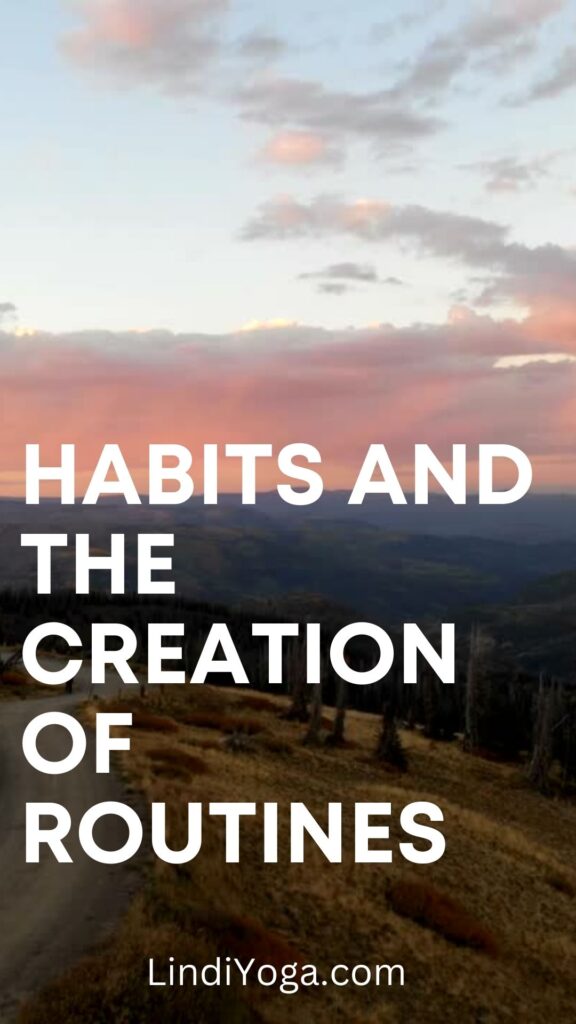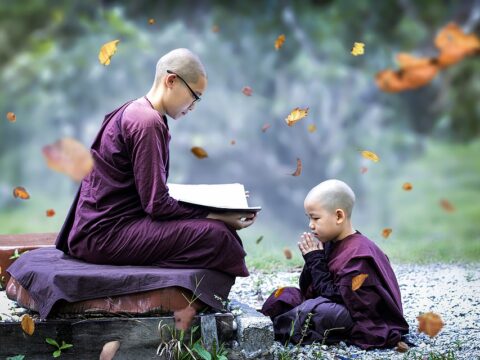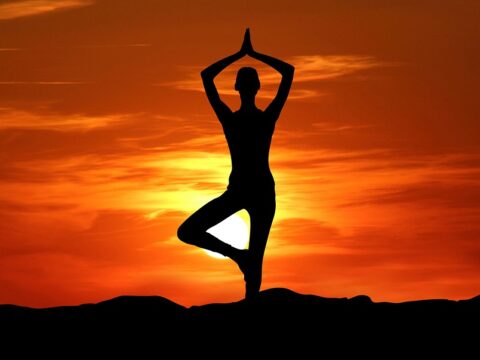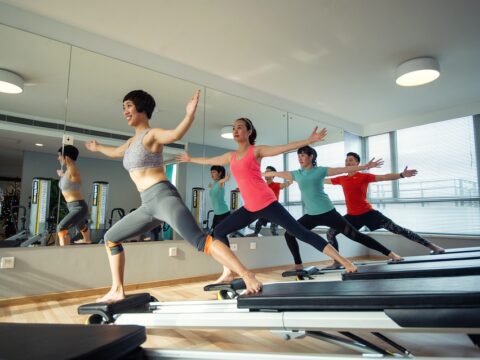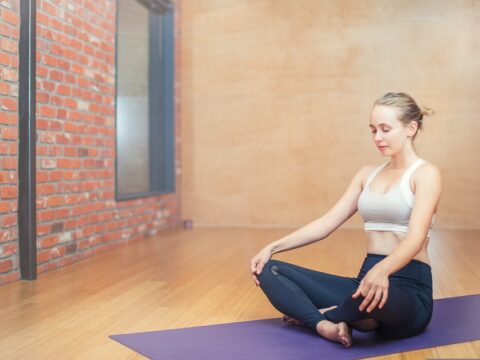Your week is not starting well. You woke up an hour before work and rushed to get ready. You showered in a flash and grabbed an energy bar and a coffee before running out the door. Yet you feel confused and overwhelmed at work. Long before the week is over, you are burnt out and know that you will not achieve this week’s goals.
The only way to get out of the rut is to create routines.
Having a set routine for mornings and evenings can lead to success. These routines can help you achieve more, think more clearly and focus on what is important. Without a routine, it can be harder to get through the day and ensure that important tasks are completed.
With a little discipline and some well-established routines, you’ll be well on your way to success. Below, learn why routines are important and the 12 specific morning and evening routines you can implement to make each day perfect.
Best way of creating habits and routines
A routine is a series of actions that are performed over and over again.
Brushing your teeth in the evening and getting ready for bed, getting up at 5:30am and do the workouts in the morning, buying a croisson and watching the news before you leave for work, and even eating some food while watching Netflix – these are all routines. They are all actions that happen over and over again, a rhythm in your everyday life.
Even if some routines aren’t helpful, they are still effective because they are done regularly.
Routines create high achievers
“We are what we do over and over again. Excellence, then, is not an act, but a habit.”
Aristotle
Many artists such as Frederic Chopin, Benjamin Franklin and Ernest Hemingway had routines. Although the details of their routines varied greatly, each of them had specific steps that helped them achieve an optimal state of mind.
A solid routine can help you make the most of the limited resources you have, including time, willpower and self-discipline. It can also help you stay focused and not let your emotions control you.
High-performing people are successful because they find routines that work for them and stick to them.
The difference between habits, routines and rituals is that habits are things we do automatically, routines are usually a collection of habits or actions that we do regularly, and rituals are like routines but with a different mindset behind the actions.
Routines put our brain on autopilot
Our routines are powerful because we are creatures of habit. We can use our habits to achieve what we want. Habits allow our brain to work in an automatic state where we need little or no willpower.
Here’s how it works:
When you wake up, your brain automatically goes into “automatic” mode, meaning it is ready to do the tasks it has done many times before. For example, when you wake up and smell coffee, your brain knows it’s time to turn on the coffee machine. This is because you have repeated this action so many times that it has become a habit.
A morning coffee routine is a small thing, but it helps many stay on track throughout the day. It’s simple, and if other things that have a big impact on your day were as simple as making coffee, you could accomplish a lot.
Routines have the power to make a big impact. Small, repeated actions can lead to big changes over time. By establishing morning and evening routines, you can set yourself up for maximum productivity every day.
The following poses are designed to help you set an intention for the day and deeply relax before bed. The morning exercise gathers your energy for the day ahead, while the evening exercise clears mental clutter so you can find restful sleep.
When you are in flow, remember to focus on the quality of energy you want to bring to the experience. We hope this will make you more aware of where your attention is going and keep you connected to that freedom, both on and off the mat.
The morning routine
When you wake up in the morning, you have the chance to start the day anew. This sequence can help you start the day more mindful and aware. Do the sequence once on the right side and then repeat it on the left side.
Cat-Cow Pose ( Bitilasana )
First get onto all fours with your wrists directly under your shoulders and your knees directly under your hips. As you inhale, arch your spine so that your belly opens towards the floor while you squeeze your shoulder blades together.
On the exhale, reverse the movement, rounding your back towards the ceiling as you push away from the floor. Begin this undulating movement from your belly button to create a place of inner connection deep within. Throughout the day, make sure you connect with this inner compass. Repeat the movement 6 times, or more if you wish.
Downward Facing Dog ( Adho Mukha Svanasana )
We don’t all have the ability to do full body yoga, so we have to come up with other ways to practice it. This is a great way to get in a little bit of downward facing dog, while keeping your spine straight and feeling strong.
First, lay on your back with your knees bent. Extend your arms out to the sides, palms facing down. Second, extend your legs out in front of you, and bring your feet close together. Keep your heels close to your shoulders.
Third, push your hips up toward the ceiling. Pull your navel in towards your spine. Fourth, breathe in as you lift your chest, and breathe out as you lower it. Repeat this cycle for 10 seconds, or until your breath feels comfortable.
It may take you a few days to feel comfortable doing this position, but once you do, you’ll be glad you did.
Eagle ( Garudasana )
Keep your raised leg straight and bring it back through your hands to meet your left leg. From here, push yourself up into standing.
Bend your arms at the elbows and cross your right elbow under your left so that it rests in the crook of your left arm. If possible, angle your forearms to join your hands as well. Once your arms are linked, gently slide your elbows up and bend into a slight backbend while lifting your sternum. Hold the position for 3 to 4 breaths. To complete the half moon lunge, keep your lifted leg straight and bring it back through your hands to join it with your left leg. Press up into standing from here.
Standing Forward Bend ( Uttanasana )
In standing forward bend, you will have to focus on the strength of your back, not your knees. This pose is great for stretching out the muscles in your back and shoulders, and also for relieving stress.
Stand up straight with your feet together and your hands by your sides. Take a few steps back to give yourself plenty of room to stretch.
Make sure that your arms are relaxed, and that your weight is evenly distributed between your legs and your arms. As you lean forward, focus on keeping your knees close together and your arms at a 90 degree angle to the floor.
Try to stay balanced by bringing your hands close to your shoulders, and then pull them further away. Do this until you feel a stretch in your back, shoulders, and chest.
Hold this position for 10 to 30 seconds, and repeat.
Upward Salutation ( Urdhva Hastasana )
The Upward Salutation is one of the most popular standing poses in yoga. It’s a great pose to open the hips, arms, and shoulders. It’s also a fantastic pose for beginners.
Beginners should do the Upward Salutation with a partner or friend. It’s not safe to perform it solo. You will need to learn how to stand in this pose properly. That is why I suggest learning the pose with a partner.
If you decide to do the pose alone, I recommend that you stand on top of a sturdy chair, couch, or table. That way, you won’t fall. As you learn this pose, don’t worry if you feel unstable or dizzy. That is normal. You need to learn how to control the pose. So practice the pose safely.
The evening routine
Yoga postures at the end of the day can help you relax both physically and mentally so you can re-energise and be ready for the next day.
Puppy Pose ( Uttana Shishosana )
Begin by sitting on your yoga mat in the Tabletop position. Make sure your forearms are flat on the mat and your palms are facing up towards the ceiling.
Then begin to move your knees backwards until your arms are fully extended in front of you. Lower your forehead onto the mat and pull your forearms isometrically backwards while keeping your hips lifted. In this pose, let all the stress and worries of the day slide off your back. Hold this pose for 5-10 deep and slow breaths or as long as you like.
The Needle Threading Posture ( Parsva Balasana )
Parsva Balasana pose helps to release tension from your body and relaxes your mind. It is a useful pose that helps to relieve stress. The benefits of Parsva balasana pose include it relieves pain, improves blood circulation, and reduces muscle tension.
Parsva Balasana Pose – Benefits
- Balasana pose or plough pose helps to relieve stress and tension from the body.
- Balasana helps to release tensions that are accumulated in the body and helps to keep the body healthy.
- This pose helps to release the body from harmful chemicals such as carbon dioxide, carbon monoxide, etc.
- It relieves pain. It reduces swelling, muscle spasm and tightness.
- It improves blood circulation in the body. It is also known as a restorative pose.
- It helps to relax the mind and helps to reduce depression.
- It helps to increase the oxygen level in the body. It also increases the energy levels in the body.
- It helps to strengthen the spine. It is also known as a back stretching pose.
Winch-relieving pose ( Pavanamuktasana )
Have you ever felt wind blowing on your face when you were trying to meditate? It’s pretty frustrating, isn’t it?
The reason that you feel it is because of the way that your body is built. As air blows past your body, it creates friction with the skin and hair, which creates a strong sensation that makes it difficult to relax.
And, of course, if you are trying to concentrate on your breathing, this can cause your mind to wander. Now, I’m going to show you how to make this wind-relieving pose more comfortable. And after you learn the pose, I hope that you will be able to practice it whenever you need to.
Try This Yoga Pose to Relieve Wind Blowing Through Your Skin
- Stand with your feet hip width apart and your arms at your sides.
- Bend forward, keeping your weight on your heels.
- Take a deep breath in, and as you exhale, stretch your arms forward.
- Hold for 10-30 seconds, and then slowly return to the starting position.
- If you notice that the air is blowing in a particular direction, turn your head in that direction.
- This will help to calm your mind and give you a sense of peace.
Repeat the pose 3-4 times, and then switch sides to practice on the other side.
Hand-to-Big Toe Pose ( Supta Padangusthasana )
This yoga pose is perfect for beginners and yoga enthusiasts alike. If you’re looking for a quick and effective yoga pose, then this one is for you. It’s believed to stimulate the immune system, increase circulation, and relieve stress.
Try to focus on holding each position for 2-3 breaths. Inhale, and stretch your arms high above your head. Exhale, and bend your elbows to bring your hands close to your knees.
Once you’re in this position, inhale again, and push your shoulders back and your hips forward. Now slowly lower your body until you can rest your hands on the floor.
Gaze forward towards your knees. Keep your spine tall and your chest open. Your neck should be relaxed and your head straight.
Stay here for 2-3 breaths.
Finally, release the pose, and repeat on the other side.
How to to build routines into your life?
It can be difficult to build routines into your life. It requires concentration and self-control. Sometimes it seems easier to just start the day and pass out in bed after a long day at work.
If you do something repeatedly, it becomes easier over time. That’s because it becomes a habit, and habits are hard to break.
If you keep at it, you will find that your days go much more smoothly if you have a morning and evening routine.
To create your morning and evening routine, you can create a checklist that you can go through every day until it becomes a habit.
